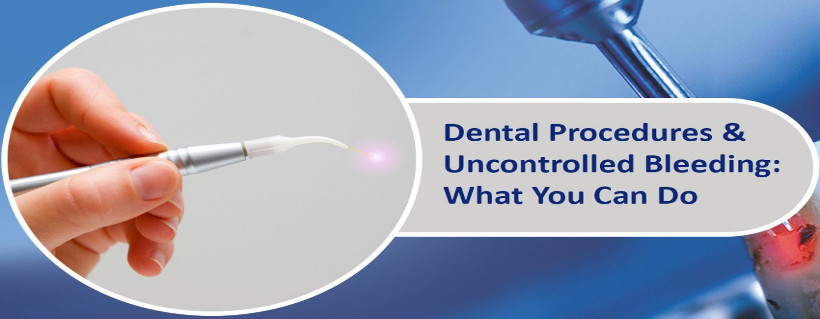Menu

Date: 2nd. Sept. 2017
This article is the next in the series of the topic: Dental Procedures & Uncontrolled Bleeding: What You Can Do. Till now, we have discussed various situations that dentists face in day-to-day dental practice and we have seen tangible solutions for the same.
In this article, we will look at modern dentistry and – how the latest dental gadgets act as adjuncts in treating various dental pathologies, how they speed up the treatments and how they help us provide a more predictable outcome as compared to what was achievable in yesteryears. These phenomena of modern science help us provide quick solutions to patients’ problems as well as offer new vistas to our esteemed patrons thus elevating the dental practice and the profession at large. It also helps eliminate the fear factor in patients’ minds.
Let us talk about the influence of dental lasers in today’s dental practice.
Not so long ago, when dental lasers had not entered the Indian dental clinical setups, patients were required to visit the clinic frequently (commonly called as sittings) to seek the treatment, which increased the duration of treatment. This posed a problem for patients who lived far away from the dentist, influencing patients to change their dentist. However, with the easy availability of the internet today patients can easily locate a dental clinic close to their home at the press of a button.
Let us now look at the vast opportunity that dental lasers offer us dental clinicians and how they can help us get ahead of the game in maintaining our existing esteemed patrons and also in increasing patient referrals and new footfalls at our clinics.
‘Laser’ stands for the acronym Light Amplified by Stimulated Emission of Radiation.
A laser is a device that emits light through a process of optical amplification. The laser was the result of not one individual’s efforts but the combination of many leading optics and photonics scientists and engineers over the course of history.
Let us proceed to see clinical applications of such a great invention with regards to controlling bleeding while working on patients.
Filling cavities is an everyday job for dental clinicians. Nowadayspatients do not visit clinics with pristine pink gingiva. However, the presence of calculus in varying amounts and slight gingival swelling is a normal, everyday sight for most of us dentists. Ideally speaking, while filling up such cavities, slight bleeding does emanates from the gingiva.
Now imagine – the dentist is using composites as is the common practice when filing the cavity– he has done cavity cutting, isolation and has proceeded to etching. He then notices a slight red line at the base of the cavity and much to his dismay, realises that slowly blood has started creeping into the cavity architecture from the gingiva. The dentist may try all possible tactics to manoeuvre blood out of the said cavity but alas! The blood just doesn’t stop.
Routinely, a haemostatic like Viscostat (Ultradent Products USA) can be used to arrest this local gingival bleeding. In a couple of minutes, the bleeding does stop but you are left with a dark brownish black coagulate (residue) which is firmly attached to the gingiva. If this is dislodged with a sharp probe, it starts to bleed again, thus negating all efforts put in by the dentist. The same phenomena are common while using matrices for class II cavities.
Imagine that a conventional class II cavity has to be filled using dental composites and etching, bonding has been completed and the matrix band has been placed. Now what many dentists do is they place a wall of composite resin against the band and cure it fully. This is done to first create the missing wall of the cavity against which the cavity can be packed in increments to complete the restoration. Alas! Many a time to the clinician’s dismay, bleeding starts from the base of the proximal box, when the matrix band is removed.
Most patients would definitely not like the fact that the dentist is aborting the procedure because they feel that it is not worth their while to invest in another appointment for such a routine treatment. Only a dentist knows how challenging such situations can be to handle.
In both the instances mentioned above it’s up to the dentist to decide whether to abort the procedure or to fill a quick setting eugenol free cement like Cavit or a semi-permanent material like Temp-it or to continue with the procedure and not invite frustration from the patient.
(To be continued…)


| PRODUCTS | QTY | PRICE | VALUE in INR |
|---|
| PRODUCTS | QTY | PRICE | VALUE in INR |
|---|